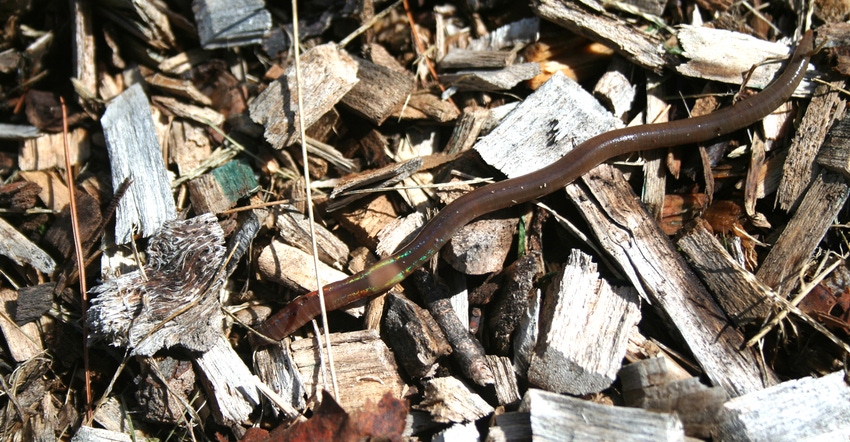September 9, 2020

The Minnesota Department of Natural Resources urges gardeners and anglers to be on the lookout for invasive jumping worms.
These destructive worms can quickly degrade soils and damage garden plants and lawns.
“Jumping worms are a relatively new invasive species in Minnesota and they are a threat to gardens and forests,” says Laura Van Riper, DNR terrestrial invasive species coordinator. “They make rich soil more like coffee grounds. They eat plant roots, damaging garden plants and sod.”
Jumping worms are a type of earthworm that looks like other common earthworms such as nightcrawlers. They are called “jumping worms” because they wiggle intensely when disturbed and sometimes appear to be jumping. Native to Asia, jumping worms have been confirmed in limited areas of Minnesota since 2006, mainly in the Twin Cities and western suburbs and in Rochester. It’s believed that they were spread throughout North America by people moving potted plants, soil, compost, mulch and fishing bait.
Jumping worms cannot be legally introduced into the environment in Minnesota and are also a poor choice for bait because they break into segments when handled.
“The good news is, jumping worms are not well established in Minnesota, and there are actions people can take to prevent their spread,” Van Riper says. “We need gardeners and anglers to be vigilant and to contact the DNR when they think they’ve found jumping worms.”
Other steps that help:
Don’t buy worms advertised as jumping worms, “snake worms,” “Alabama jumpers” or “crazy worms” for any purpose.
Anglers should dispose of any unwanted bait worms in the trash.
Gardeners should inspect incoming mulch or plants for jumping worms and if swapping plants with friends, wash off the soil and share the plants as bare root plants.
Recreationists should brush the mud off their boots and equipment.
To help Minnesotans identify and report jumping worms, the DNR has produced two short videos.
One video features Lee Frelich, director of the University of Minnesota Center for Forest Ecology, talking about how jumping worms are sometimes found in garden soils and packaged garden mulch products. The video below focuses on why jumping worms should not be purchased or used for fishing bait.
If people think they’ve found jumping worms, they should take high resolution photos showing the ring around the worm’s body in relation to its head. Jumping earthworms should be reported to eddmaps.org, or by contacting the DNR Information Center at 888-646-6367 or [email protected].
The University of Minnesota also is collecting information on jumping worms. Fill out an online report today.
The videos and more information about jumping worms and other terrestrial invasive species are available on the DNR website.
Source: Minnesota Department of Natural Resources, which is solely responsible for the information provided and is wholly owned by the source. Informa Business Media and all of its subsidiaries are not responsible for any of the content contained in this information asset.
You May Also Like




